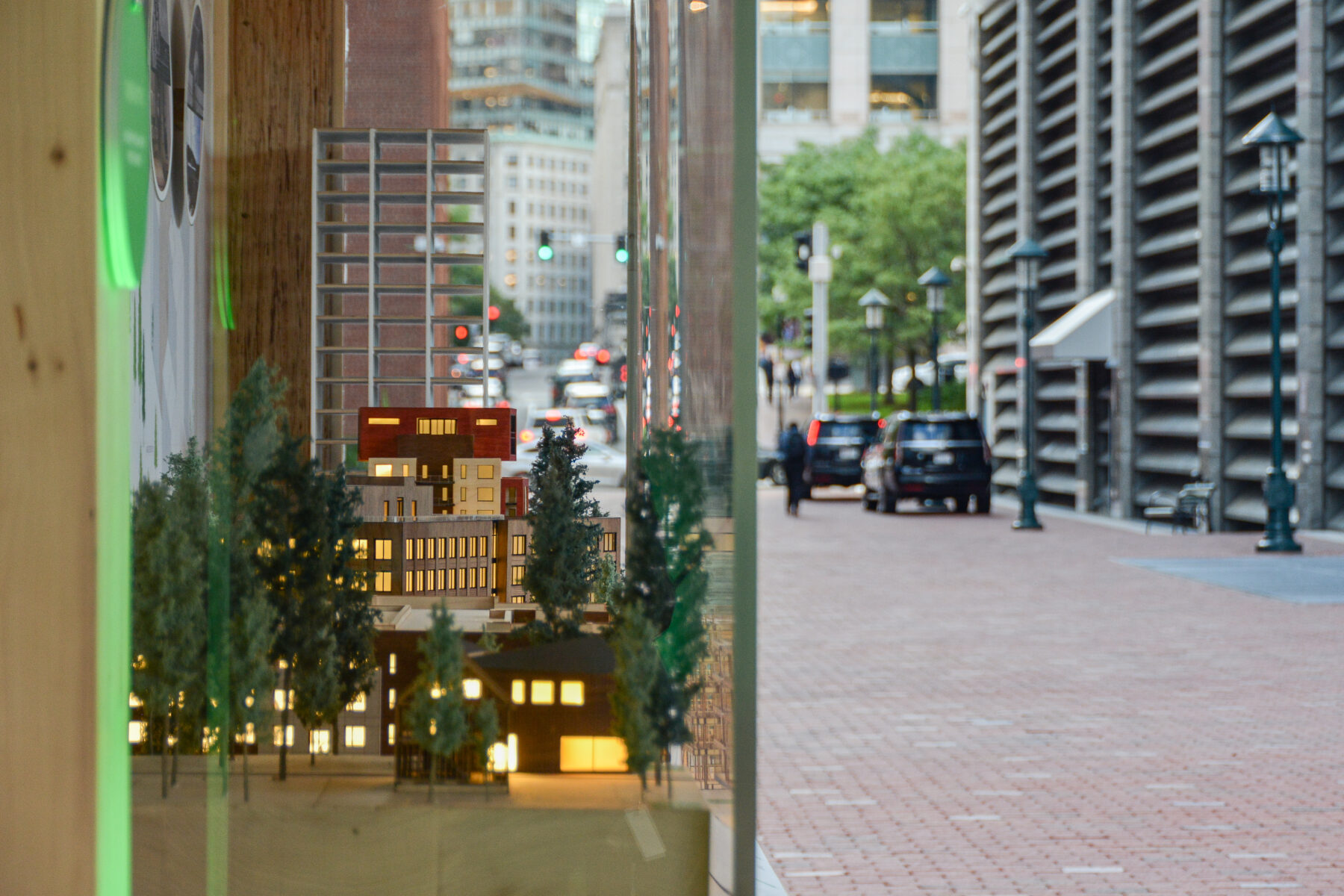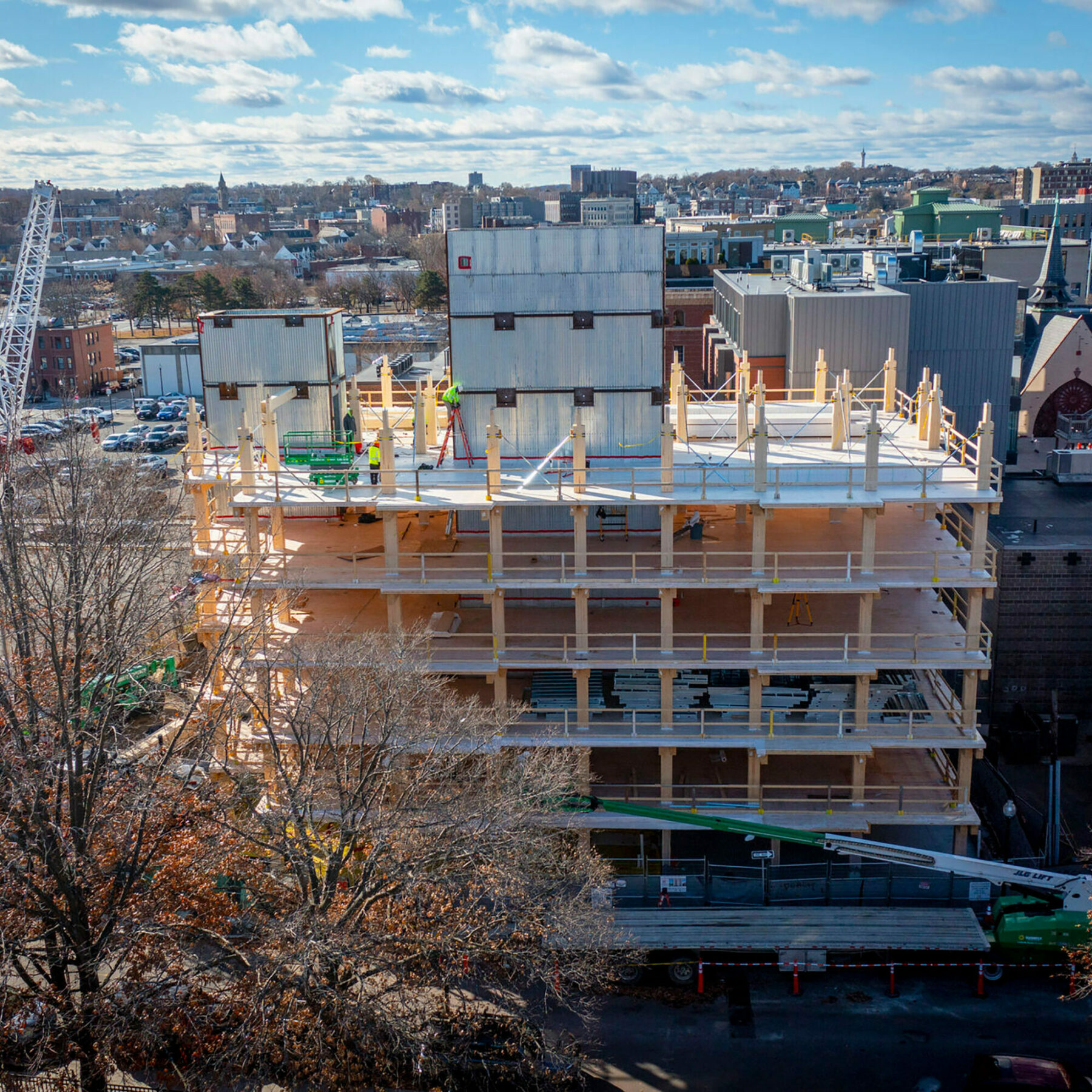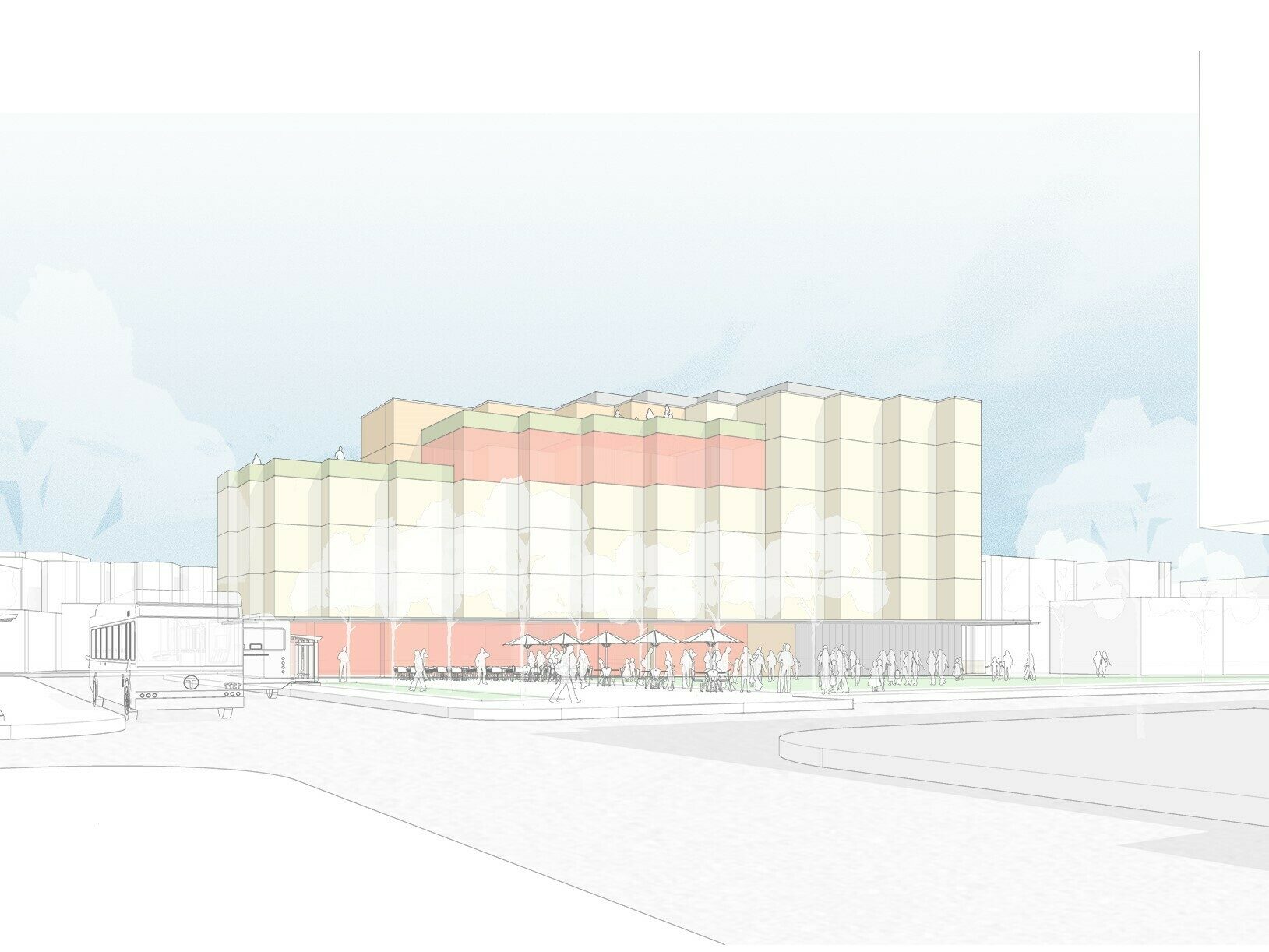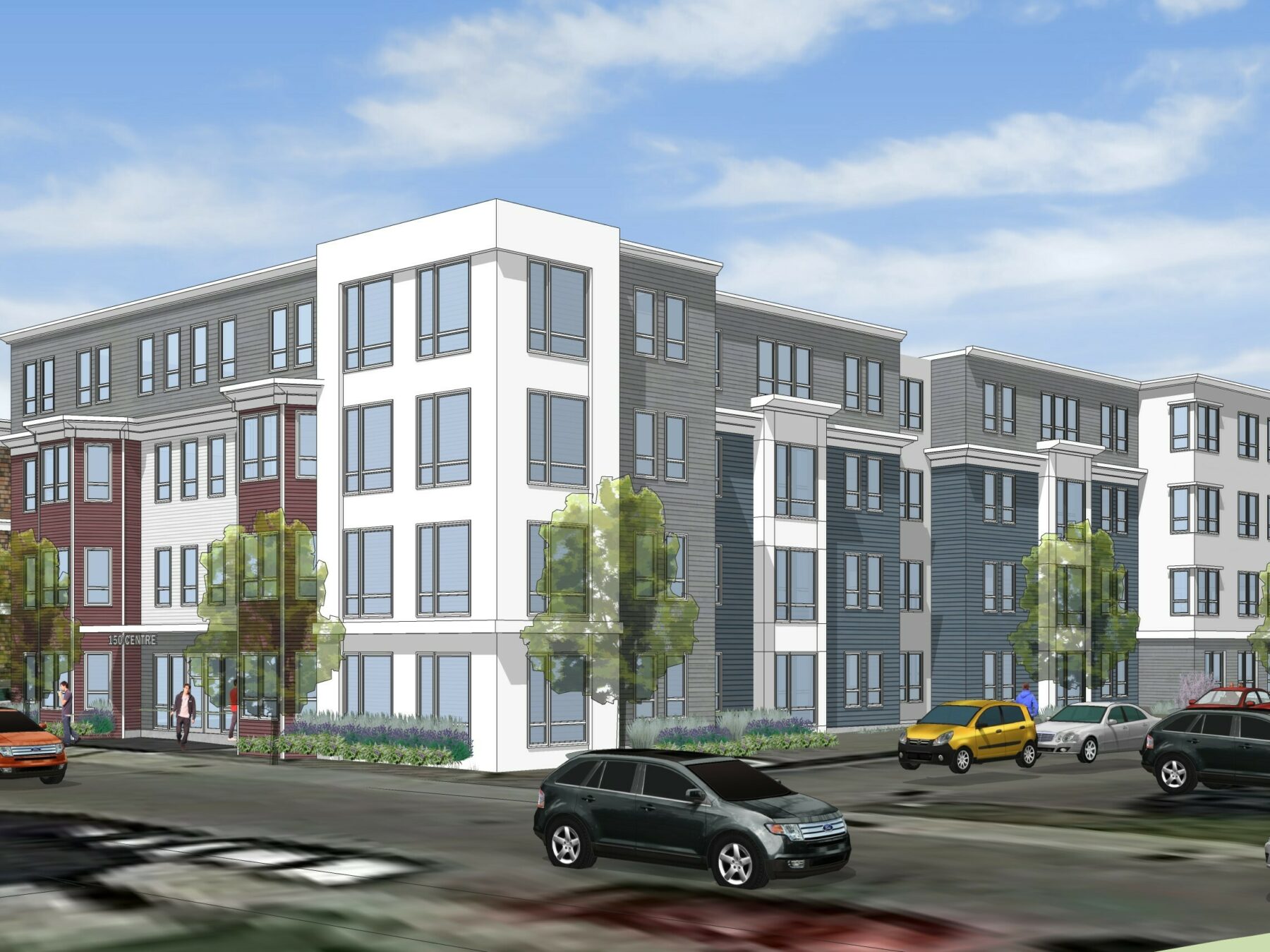Awarding of Mass Timber Accelerator grants furthers BSA's climate goals

The BSA and the Boston Planning & Development Agency (BPDA) have announced the awardees for the Mass Timber Accelerator grant program!
The changes needed to reach climate goals and reduce carbon emissions are major, but the BSA’s members and partners are committed to building solutions to tackle these challenges. A new initiative, the Boston Mass Timber Accelerator, is now a focal point for these efforts. After launching the Accelerator in September 2021, a jury selected seven projects that will receive funding to explore the feasibility of using mass timber in upcoming developments throughout Boston. Projects selected are currently in the design phase and include proposals for the construction of retail space, affordable and mixed-income housing, office buildings, and more–a broad range of new developments that reflect the many facets of the city.
"We are thrilled to see so many project teams take advantage of the Mass Timber Accelerator Program,” Mayor Michelle Wu said. “As we take on climate change, we need to use every tool at our disposal. Adopting climate friendly methods of building, like mass timber, will help the City of Boston meet our climate goals."
Mass timber, short for “massive timber,” is a relatively new way to build large-scale projects using wood as a key structural element. A common incarnation is cross-laminated timber, which is formed by layering wood panels that are fixed together using nails or adhesives. The result is a surprisingly durable building material that boasts strength on par with concrete or steel.
One of the major advantages of using mass timber is its climate-friendly properties; building with wood uses far less carbon in its manufacturing processes than building with other materials. The result is lowered levels of embodied carbon and an even more sustainable building.
With a climate crisis worsening, the City of Boston is focused on creating policies and regulations to carbon emissions. Since buildings generate nearly 40% of emissions annually (Architecture 2030), innovation in the construction sector is necessary for the city to reach its goal of becoming carbon neutral by 2050.
“It was an honor to represent the BSA as a juror for the inaugural Boston Mass Timber Accelerator Program, as this is a vital mechanism to support Boston’s Climate Action Plan,” said Jennifer Hardy AIA, a juror for the accelerator program and senior associate at Payette. “Mass timber is one of the few high-impact building materials that has the potential to act as a carbon sink … Each of the projects selected in this competitive program showed a depth of diverse team knowledge, innovation and resourcefulness that reminded me why the Boston architecture community is full of industry leaders and change makers.”
See the list of winning projects and read the press release.

Mass timber construction is still an emerging building option. While contractors, clients, firms and developers have begun to take an interest in the method for its aesthetic appeal and sustainable potential, uncertainty about costs, permits, and the need to navigate codes for building has led to some hesitation to implement mass timber. The accelerator program is designed to encourage and incentivize architecture firms and developers to explore its use—to that end, awardees will receive technical assistance, educational sessions, and the opportunity to participate in charrettes in addition to funding.
“Mass timber is still new to the market, presenting many unknowns and perceived risks among design teams and builders alike,” said Drew Colbert, Vice President of WinnCompanies, one of the program’s awardees for the Mary Ellen McCormack Redevelopment in South Boston. “This program will provide crucial and tangible learning opportunities at the project level, not only potentially transforming buildings in design today, but all buildings program participants work on for years to come.”
Chris Johns AIA knows well that even for industry professionals who are excited about its potential, working with mass timber isn’t without its difficulties. Johns is Founding Partner at ThoughtCraft, one of the Accelerator awardees and a small firm in Boston that also has an office in North Carolina. Through the accelerator, the firm will assess the possibility of using mass timber in a six-story, 40-unit mixed income housing development with ground-floor retail in East Boston.

Johns has found that his biggest obstacle while trying to utilize mass timber is pitching it to clients.
“[It’s challenging to] not have the expertise and data to convince a client it’s a worthy endeavor besides just being the right thing to do from an environmental perspective, and that it can potentially save them time and money,” Johns said. “We have also found it challenging to utilize mass timber on buildings that require geometry other than a rectangular box.”
The accelerator brings a chance to experiment with mass timber that would otherwise be difficult to obtain, especially in a project's early stages.
“We have been researching and testing mass timber on a small scale for some time and this is a unique opportunity to expand our knowledge to scale up this promising construction assembly,” said Johns.
“I think once a few developers and contractors have gained familiarity with the material—and discover how quickly these projects go up—the demand for mass timber is going to start to climb very quickly,” said Nicole St. Clair Knobloch, principal at Olifant, LLC., a market development firm that promotes conservation and sustainable practices.
An advocate for mass timber, Knobloch is an expert in the lumber supply chain and manufacturing process. She sees a bright future for mass timber in New England, which she says is uniquely poised to be a hub for expanding sustainable building practices with wood.
“In our region, there is tremendous interest in siting a mass timber manufacturing facility in Maine, while in southern New England there is a strong effort to certify species, like eastern hemlock, that are found in abundance here,” said Knobloch.
“Unlike many other US regions, the Northeast and neighboring Canadian land have a special advantage of land-based access to regionally-sourced timber,” added Alex MacNeil, Director at QuakerLane, another one of the awardees. “There is no need for carbon-heavy shipping and use of global resources to access materials for great structures. The lower carbon footprint makes all the difference.”

With more and more developers planning to build with lumber, a flourishing lumber supply chain in the Northeast, and an urgent need for more sustainable building, the time seems ripe to build with regionally sourced mass timber.
“Mass timber … helps us transform our thinking about practice by presenting a biogenic, renewable structural solution for large buildings,” said Knobloch. “And it connects us to regional working forests. And when we start thinking that way, we look at other materials in the building, such as wood insulation. So in this way, mass timber has the potential to be a climate game-changer.”
The Accelerator is an exciting slice of a larger set of solutions, research projects, and initiatives that the BSA is focused on through its network of members, partners, and staff. There’s more coming for the accelerator: a second round of funding is in the works and will open later this year. Until then, keep an eye on the winning projects.
Learn more about the BSA's mass timber work.
What’s one thing you want the general public to know about mass timber?
We asked Accelerator awardees and experts to respond to this question. Here are their answers.
“Leave your preconceived notions behind. Mass Timber construction is regenerative and is cool!”
Philippe Saad, Principal, DiMella Shaffer
“It is strong, fire-resistant, and makes construction more efficient. Who doesn’t love wood?”
Chris Johns AIA, Founding Partner, ThoughtCraft
“While we have a lot to learn in this program, mass timber construction presents a way to build new buildings with sustainable, environmentally responsible materials now.”
Andrew Colbert, Vice President, WinnDevelopment at WinnCompanies
"Mass timber construction is a way to build cities from living, renewable materials, connecting our cities to our forests and back again.”
Nicole St. Clair Knobloch, Principal, Olifant
“It’s like going to the forest in your own home, given its fresh pine scent, warmth to touch and it’s soothing to the soul.”
Tom Chung FAIA, Principal, Leers Weinzapfel Associates
“From a sustainability and carbon footprint point-of-view, it’s hard to beat mass timber! There are no forests of concrete, aggregate and steel that will regenerate themselves.”
Alex MacNeil, Director, Quaker Lane Capital
"We think that the public should be made more aware that Mass Timber construction can be an important and beautiful part of the solution [to climate change]; one that people can actually live in and enjoy.”
Matthew Bagedonow, Principal, MWB Construction Advisors

